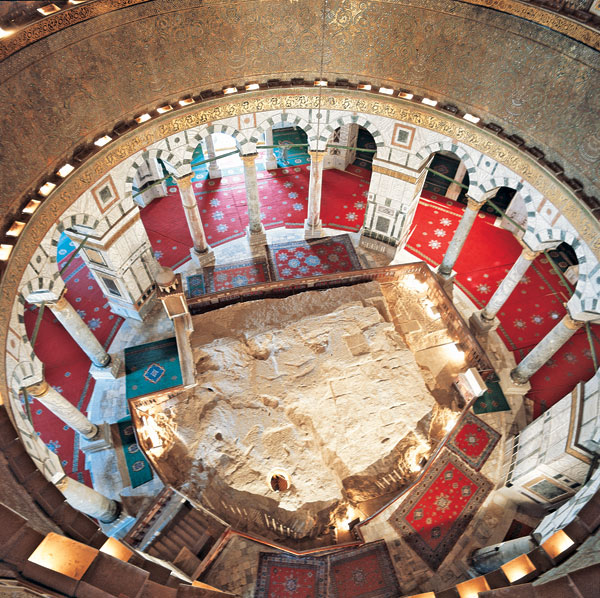Image Details

Garo Nalbandian
Called As-Sakhra (the rock) by Muslims, this irregularly shaped outcropping has been for Jews, Christians (of the Crusader period, at least) and Muslims one of the most sacred spots on earth. The highest point on the Temple Mount, the rock rises 5 feet above the floor of the Dome of the Rock. Steps lead to a cave below the rock, but the cave itself and access to it have been recut so many times over the centuries that it is impossible to know the original shape. According to early Muslim tradition, Solomon built his Temple directly over the rock. Later Muslim tradition identifies the rock as the place from which the Prophet Muhammad ascended to heaven.
After the Arab Muslims took Jerusalem, both Arabs and Jews probably conducted rituals at the rock during specific holy days. The 11th-century Muslim scholar al-Wasiti relates that Muslims anointed the rock with unguents and burned incense inside the shrine—rituals foreign to Islamic practice but reminiscent of rituals performed in the Jewish Temple. Author Moshe Sharon suggests that Muslims believed the Dome of the Rock symbolized the renewal of Solomon’s Temple, and thus served to refute the belief of Christians (then the Muslims’ main enemy) that the site would remain in desolation until the Second Coming.
